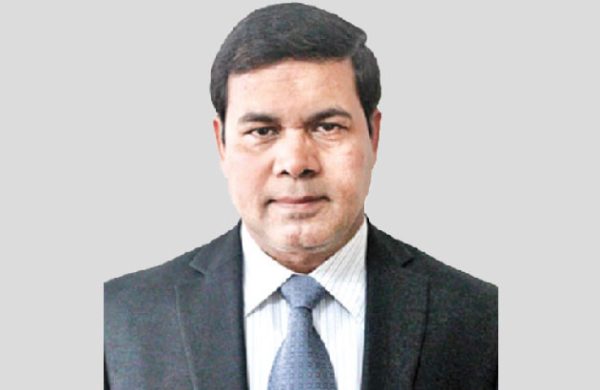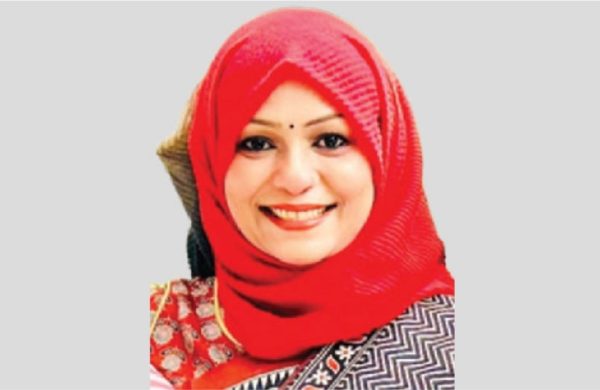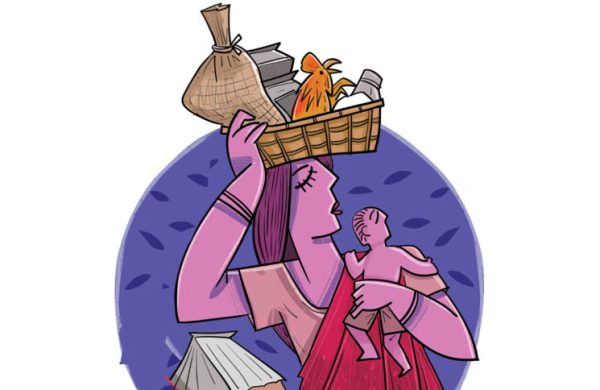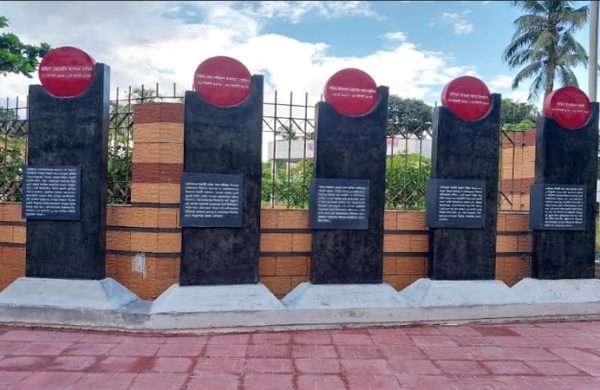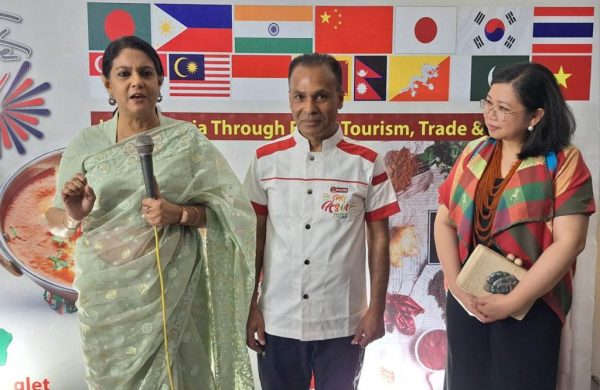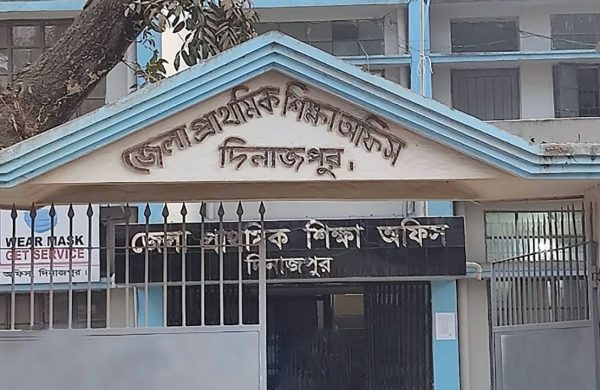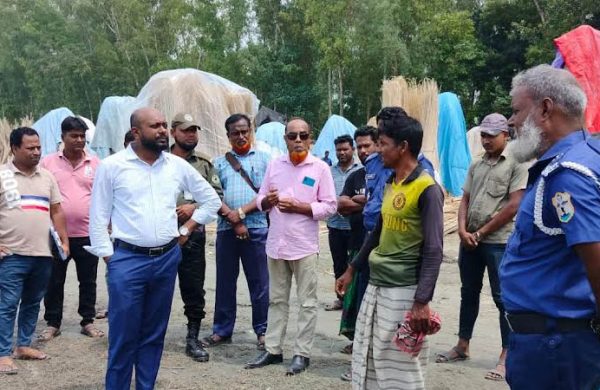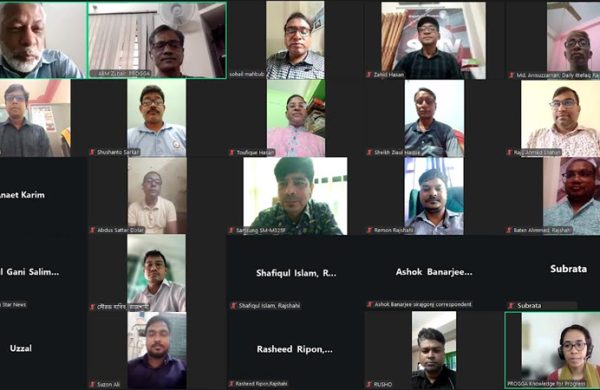Our challenges in building blue-green economy
- Update Time : Wednesday, September 10, 2025

—Dr Shahrina Akhtar—
Bangladesh, cradled by the mighty Bay of Bengal and the world’s largest delta, faces an urgent climate reality. Rising tides, encroaching salinity, and shifting coastlines threaten both farmland and livelihoods. Yet amid these challenges, a quiet agricultural revolution is taking root. By blending salt-resilient crops, floating agriculture, aquaculture, and seaweed farming, the nation is building a “Blue-Green Economy” that promises not just survival, but sustainable growth and resilience.
Agriculture at the Edge: Coastal Bangladesh comprises over 30 percent of the nation’s arable land, around 2.85 million hectares, yet more than half is now affected by soil salinity, a problem worsening with climate change. By 2050, salinity in many coastal areas could rise by 26 percent, with some hotspots already seeing 15-16 percent drops in crop yields. Rice, the staple food, is particularly vulnerable; when soil salinity exceeds 8 dS/m, a measure of salt concentration, plants often wilt, turn yellow, and die. Regions such as Satkhira, Khulna, and Bagerhat are most affected. In Satkhira alone, 60 percent of farmland has become too saline for traditional crops, forcing roughly 15 percent of farmers to abandon agriculture since 2020. The threat to food security is immediate and pressing for these communities.
Yet, solutions are emerging. Salt-tolerant rice varieties like BRRI dhan97 and BINA dhan-10 can thrive in soils with 10-12 dS/m salinity, covering over 120,000 hectares since their 2023 release, with newer varieties pushing tolerance toward 14 dS/m. Complementing these innovations, farmers are reviving floating agriculture, growing okra, bitter gourd, and leafy vegetables on bamboo and water hyacinth rafts that withstand seasonal floods. Supported by strategies such as the Bangladesh Delta Plan 2100, these methods offer scalable ways to maintain productivity and safeguard livelihoods along increasingly saline coasts.
Aquaculture as a Green Multiplier: Bangladesh’s aquaculture sector has become a vital pillar of the Blue-Green Economy. Inland aquaculture alone produced 2.639 million tonnes in 2021, growing at 6.84 percent annually, and contributed 26.5 percent of agricultural GDP. Fisheries and aquaculture support over 20 million people, more than 12 percent of the population, while total fish production reached nearly 4.9 million tonnes in 2022-23. These figures highlight the sector’s critical role in ensuring food security, creating livelihoods, and driving economic growth across the country.
Coastal aquaculture has also expanded rapidly. Shrimp farming, once confined to 148,000 hectares in the early 2000s, grew to 275,000 hectares by 2012-13, supporting over 700,000 people and generating hundreds of millions in exports annually. Innovative systems now integrate aquaculture with rice cultivation, a “blue-green revolution” that could transform 2.83 million hectares of seasonally inundated land, producing an additional 1.58 million tonnes of rice and $9.4 billion in revenue. As prawn farmer Mohammad Rahman of Khulna notes, “Rice and prawn together bring stability, and we see the land becoming fertile again.” Such stories show how scientific innovation and local adaptation are reshaping livelihoods along the coast.
Seaweed: Coastal Carbon and Coastal Cash: Though currently small-scale, seaweed farming holds significant potential for Bangladesh. With a 700-kilometer coastline and over 25,000 km² of coastal area, the country is ideal for cultivation. Of roughly 32 recorded species, 14 are commercially viable, yet only four are grown, involving about 300 households, mostly in Cox’s Bazar. In 2020, these farmers produced 390 tonnes of seaweed, used in food, cosmetics, animal feed, and pharmaceuticals. Globally, seaweed aquaculture generates 33 billion tonnes valued at $11.8 billion, with demand rising. Projections suggest Bangladesh could reach 50 million tonnes by 2050, creating livelihoods while acting as a powerful blue carbon sink.
Beyond income, seaweed farming protects ecosystems. By absorbing excess nutrients, improving water quality, and sequestering carbon, it mitigates climate impacts while opening economic opportunities for coastal women and youth. Salma Begum, a farmer in Cox’s Bazar, explains, “Seaweed farming lets us earn without cutting mangroves or draining land. It keeps the water clean and feeds our families”.
Circular Future Farming: Integrated Multi-Trophic Aquaculture, or IMTA, combines seaweed, shellfish, and finfish on the same farm. Nutrients are recycled naturally, boosting productivity while reducing environmental impact. In Khuruskul village, a pilot IMTA system yielded 600 kilograms of seaweed from six rafts in just three months, generating $220. Mussels and healthier fish added further income, demonstrating that productivity, sustainability, and resilience can coexist. IMTA is scalable, offering a model for climate-smart coastal aquaculture that balances ecology and economy.
The Blue-Green Win-Win: The emerging Blue-Green Economy links environmental health with socio-economic prosperity. Salt-tolerant crops, floating agriculture, and diversified aquaculture strengthen climate resilience against rising tides and salinity. Economically, aquaculture and seaweed farming could unlock billions in exports, provide green jobs, and diversify income sources. Nutritionally, fish delivers the nation’s main source of animal protein, while seaweed supplements essential vitamins and minerals. Environmentally, IMTA systems and seaweed cultivation sequester carbon, absorb pollutants, and reduce dependence on chemical fertilizers.
Yet challenges remain. Seaweed farming is constrained by limited technology, weak value chains, and poor market awareness. Unmanaged shrimp monocultures can degrade wetlands, displace smallholders, and threaten fragile mangroves. Rising salinity also exacerbates health risks, including water-borne diseases and chronic kidney conditions. Overcoming these hurdles will require policy support, credit access, value-chain development, technical training, and coordination across research, extension, and climate policy frameworks.
Bangladesh as a Blue-Green Vanguard: Long seen as a climate victim, Bangladesh is quietly emerging as a pioneer in the Blue-Green Economy. By integrating sea, salt, and soil, the nation is creating a food system that protects livelihoods, enhances nutrition, supports exports, and safeguards fragile coastal ecosystems. The Bay and the rice fields, once considered in conflict, are learning to thrive together. Bangladesh’s example shows the world that climate resilience is not just about survival; it is about smart innovation that feeds people, nurtures nature, and grows the economy.
———————————————————————————-
The writer is a Specialist (Technical) & Research Adviser, Krishi Gobeshona Foundation


